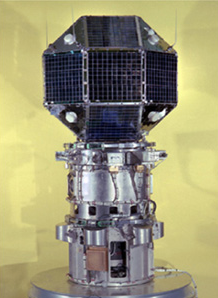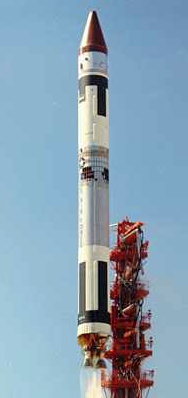
In 1965 a satellite dubbed LES1 was built by the Massachusetts Institute of Technology (MIT) and subsequently launched into space that same year. All was well and good until 1967 when communications were lost with this American-made satellite, seemingly 'dead'—until recently when—surprise surprise—it appeared again. The satellite suddenly came back online and, yes, began transmitting again after 50 years of silence.
Actually it wasn't entirely silent, as some amateur astronomers suspected they'd found the satellite in 2013, but the confirmation process took years since it was difficult to track with its sporadic transmissions.

What was discovered is that a mistake in the satellite’s circuitry caused it to never leave its circular orbit, and it eventually stopped transmitting in 1967. The satellite’s signal now fluctuates widely in strength, meaning that it’s likely only transmitting when its solar panels are in direct sunlight. Scientists believe that the satellite’s onboard batteries have disintegrated.
This is not the first time that a NASA solar probe was dead and then alive again. In 1998, the Solar and Heliospheric Observatory lost contact with NASA but was eventually reacquired. In August NASA rediscovered its Solar Terrestrial Relations Observatories (STEREO-B) probe after 22 months of searching, establishing contact with the $550 million probe, alas, only for several hours.
The STEREO-B probe was launched in 2006 to observe solar and space weather phenomena from deep space. The probe was lost in October 2014, but was only supposed to remain operational for two years. The spacecraft was set to pass directly behind the sun right before it was lost.
While NASA is unsure that STEREO-B is still functioning well enough to be scientifically useful, its sister spacecraft STEREO-A is functioning normally. The space agency will likely need to study STEREO-B with the Hubble Space Telescope to get it back in working order, which can’t happen until at least 2019 due to research schedules and orbital issues.
Here are some informative sites regarding LES series satellite...
Amateur Radio Peøsat site provides extensive information: http://www.pe0sat.vgnet.nl/satellite/sat-history/les-1/
"The LES (Lincoln Experimental Satellite) series were spacecraft designed and built by the Massachusetts Institute of Technology Lincoln Laboratory as part of the Lab's Air Force-sponsored program in space communications. Their goal was to test realistically, in orbit, new devices and techniques developed for possible use in satellite communication systems. LES-5 was designed to aid in the development of a tactical satellite communication system for the Department of Defense and was used for the first-ever satellite communications among Army, Navy, and Air Force units. All spacecraft in the LES series were launched from Cape Canaveral." From The Worlds Of David Darling Encyclopedia of Science

